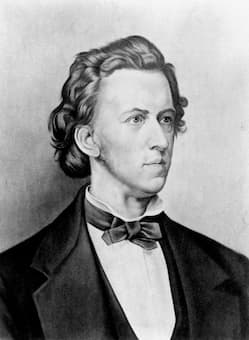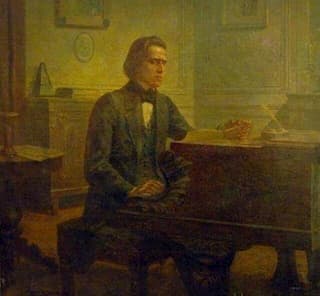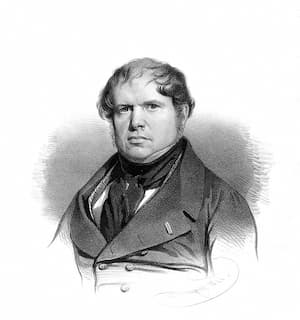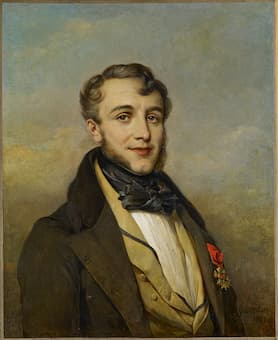Prague is a city that architecturally is vaguely reminiscent of many places. I visited Prague for the first time earlier this summer, and found myself with memories of Italy, Germany and Scandinavia in my mind as I walked the cobbled streets. Then it has its political markers – the Lennon Wall with its ever-changing graffiti, marking global causes and the Memorial to the Victims of Communism active in Czechoslovakia between 1948 and 1989.
Its music – the distinctive Bohemian legacy of Dvořák, Suk, Smetana and others – perhaps gives the city an extra dimension to its colour. ‘My music is rhythmic because I am Czech,’ Bohuslav Martinů once said. ‘The national music of the Czechs is rhythm – strong and agile rhythm.’
But it was Bedřich Smetana (1824-1884), who was perhaps the first composer to revive the Czech musical language. A pioneer in his own right, he is now known in the country as the ‘father of Czech music’. This shift to writing in Czech came as later in life, he further embedded himself in Czech culture by learning to speak the language and the Czech nationalist movement caught wind. His own first language, as was usual among the middle classes in the Habsburg empire, was German.
Strong and lyrical, the Czech language has West-Slavic origins and is distinctly different to the German language of Smetana’s upbringing. Listening to the discussions of Czech audiences felt like a further journey into the music of the country. As I settled down in the National Theater for a production of Smetana’s late opera The Secret, the pastel and gold colours of the building glimmered and the strong, lyrical language reduced to whispers.
 The interior of the National Theatre, Prague | Photo: National Theatre Prague
The interior of the National Theatre, Prague | Photo: National Theatre Prague
The Czech National Opera has commitment to celebrating its composer, Smetana, in his 200th anniversary year as part of the ‘Year of Czech Music’. The Secret lives alongside eight other Czech operas that Smetana wrote whilst principal conductor of Prague’s Provisional Theatre, the temporary home for Czech drama and opera before the National Theatre was built. Libuše (The Kiss) has also seen a new production this year, as well as revivals of The Bartered Bride and Dalibor.
Smetana’s operas blend the folk songs of his homeland with his personal style and have a poetic musical language. So too does his orchestral music, the most famous of which, his Má vlast was composed towards the end of his life and in the symphonic poem style pioneered by his friend Franz Liszt. Just as he began writing the work in 1874, Liszt lost the hearing in his left ear and a month later had also lost hearing in his right. He completed the work profoundly deaf.
By the end of 1874, Smetana resigned from his position as a conductor of the Provisional Theatre, because he couldn't hear well enough to keep doing his job. He wrote in his diary at the time: ‘If my disease is incurable, then I should prefer to be liberated from this life.’ He also suffered severely from tinnitus and wrote the ‘high E’ pitch he was hearing in the last movement of Bedřich Smetana's String Quartet No. 1, ‘From My Own Life’. In the middle of the finale, the quartet breaks off, followed by this mysterious high note. I wonder if this was a form of healing for Smetana, as embedding a tinnitus pitch into music has been known to significantly reduce the volume of the pitch. Was Smetana writing to sooth, rather than protest?
Many have argued about what caused the composer’s deafness and later his mental illness, leading for his body to be exhumed twice. In 1987 antibodies were found that pointed to syphilis, though the diagnosis still isn’t conclusive.
 The Smetana Museum original manuscript of Smetana's opera The Kiss | Photo: Hattie Butterworth
The Smetana Museum original manuscript of Smetana's opera The Kiss | Photo: Hattie Butterworth
Learning of Smetana’s connections and tragedies came from the beautifully-curated Smetana museum, right on the Vltava river in a neo-renaissance building. It’s an intimate and moving experience, holding original letters and memorabilia from Smetana’s life. So too does the museum at Jabkenice, where a deaf Smetana composed many of his later works.
I often wonder about composers: does knowing about their lives matter or impact the way we hear the music? Perhaps the ins and outs of Smetana’s private life aren’t as important to the music as the knowledge is of his cultural journey throughout his life. When we listen to Smetana we are hearing a shift into a cultural identity and a start to the legacy we now know of the country’s music. It’s history through staves, scores and melodies.
 The Czech Philharmonic closing the Prague Spring Festival 2024 | Photo: Hattie Butterworth
The Czech Philharmonic closing the Prague Spring Festival 2024 | Photo: Hattie Butterworth
Gramophone’s Orchestra of the Year 2024 was voted as being the Czech Philharmonic Orchestra. On my trip in June I saw the orchestra at the Rudolfinum concert hall in an all-Czech programme of music to close the annual Prague Spring Festival. From Smetana and Dvořák to the European premiere of Miroslav Srnka's Superorganisms, it was a unique opportunity to understand a full spectrum of Czech music and witness its effect on me. Perhaps the constant thread is the folk music of the country – still influencing Czech composers to this day and giving an intergenerational connection and community to the audiences.
In a recorded speech to receive the award, the orchestra’s chief conductor Semyon Bychkov said: ‘this orchestra lived by navigating through the highs and the lows, always attached to the national musical tradition, keen to preserve its unique sound and expression.’ Prague is engulfed with music. Walk around with your headphones in – Dvorak’s symphonies hold new resonance, bringing this iconic river and architecture to life through sound and history.
2024 is the Year of Czech Music. Find out more at visitczechia.com
 / madonna
/ madonna
 / madonna
/ madonna
 / madonna
http://www.madonna.com/newsletter
The Madonna Channel is the official YouTube home for Madonna. As the best-selling female recording artist of all time, Madonna continues to leave an indelible mark on the world through her art, music, activism and humanitarian leadership. Madonna consistently pushes boundaries, spurs conversations and unites us all through her revolutionary work. Subscribe for the latest videos, music, news and updates. Enjoy Madonna’s groundbreaking music videos, live performances, humorous videos and more.
Lyrics:
¿Cómo puede ser verdad?
[English translation: "How could it be true?"]
Last night I dreamt of San Pedro
Just like I'd never gone, I knew the song
A young girl with eyes like the desert
It all seems like yesterday, not far away
Tropical the island breeze
All of nature wild and free
This is where I long to be
La isla bonita
["The beautiful island"]
And when the samba played
The sun would set so high
Ring through my ears and sting my eyes
Your Spanish lullaby
I fell in love with San Pedro
Warm wind carried on the sea, he called to me
Te dijo te amo
["He told you, 'I love you.'"]
I prayed that the days would last
They went so fast
Tropical the island breeze
All of nature wild and free
This is where I long to be
La isla bonita
And when the samba played
The sun would set so high
Ring through my ears and sting my eyes
Your Spanish lullaby
I want to be where the sun warms the sky
When it's time for siesta you can watch them go by
Beautiful faces, no cares in this world
Where a girl loves a boy, and a boy loves a girl
Last night I dreamt of San Pedro
It all seems like yesterday, not far away
Tropical the island breeze
All of nature wild and free
This is where I long to be
La isla bonita
And when the samba played
The sun would set so high
Ring through my ears and sting my eyes
Your Spanish lullaby
Tropical the island breeze
All of nature wild and free
This is where I long to be
La isla bonita
And when the samba played
The sun would set so high
Ring through my ears and sting my eyes
Your Spanish lullaby
Te dijo te amo
El dijo que te ama
["He said he loves you"]
La isla bonita
Your Spanish lullaby
/ madonna
http://www.madonna.com/newsletter
The Madonna Channel is the official YouTube home for Madonna. As the best-selling female recording artist of all time, Madonna continues to leave an indelible mark on the world through her art, music, activism and humanitarian leadership. Madonna consistently pushes boundaries, spurs conversations and unites us all through her revolutionary work. Subscribe for the latest videos, music, news and updates. Enjoy Madonna’s groundbreaking music videos, live performances, humorous videos and more.
Lyrics:
¿Cómo puede ser verdad?
[English translation: "How could it be true?"]
Last night I dreamt of San Pedro
Just like I'd never gone, I knew the song
A young girl with eyes like the desert
It all seems like yesterday, not far away
Tropical the island breeze
All of nature wild and free
This is where I long to be
La isla bonita
["The beautiful island"]
And when the samba played
The sun would set so high
Ring through my ears and sting my eyes
Your Spanish lullaby
I fell in love with San Pedro
Warm wind carried on the sea, he called to me
Te dijo te amo
["He told you, 'I love you.'"]
I prayed that the days would last
They went so fast
Tropical the island breeze
All of nature wild and free
This is where I long to be
La isla bonita
And when the samba played
The sun would set so high
Ring through my ears and sting my eyes
Your Spanish lullaby
I want to be where the sun warms the sky
When it's time for siesta you can watch them go by
Beautiful faces, no cares in this world
Where a girl loves a boy, and a boy loves a girl
Last night I dreamt of San Pedro
It all seems like yesterday, not far away
Tropical the island breeze
All of nature wild and free
This is where I long to be
La isla bonita
And when the samba played
The sun would set so high
Ring through my ears and sting my eyes
Your Spanish lullaby
Tropical the island breeze
All of nature wild and free
This is where I long to be
La isla bonita
And when the samba played
The sun would set so high
Ring through my ears and sting my eyes
Your Spanish lullaby
Te dijo te amo
El dijo que te ama
["He said he loves you"]
La isla bonita
Your Spanish lullaby



 The interior of the National Theatre, Prague | Photo: National Theatre Prague
The interior of the National Theatre, Prague | Photo: National Theatre Prague The Smetana Museum original manuscript of Smetana's opera The Kiss | Photo: Hattie Butterworth
The Smetana Museum original manuscript of Smetana's opera The Kiss | Photo: Hattie Butterworth The Czech Philharmonic closing the Prague Spring Festival 2024 | Photo: Hattie Butterworth
The Czech Philharmonic closing the Prague Spring Festival 2024 | Photo: Hattie Butterworth